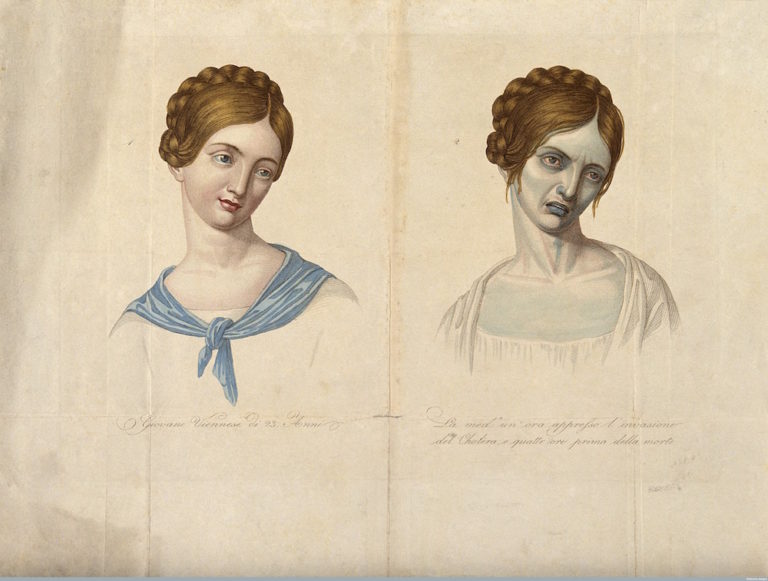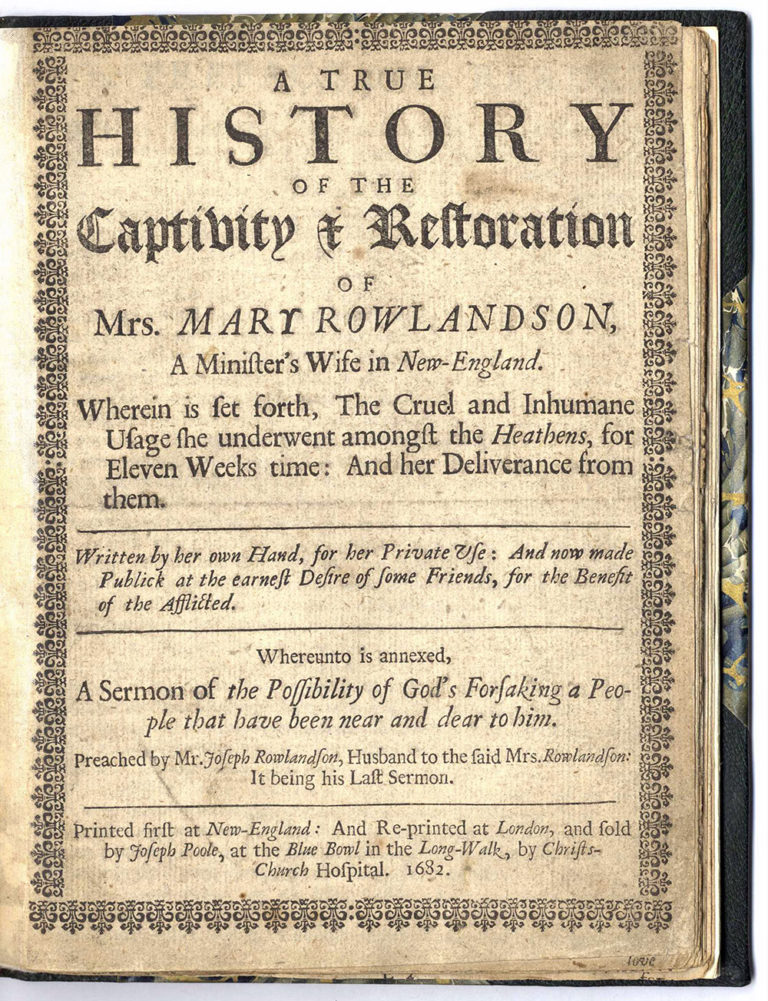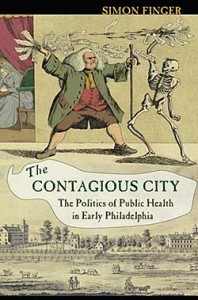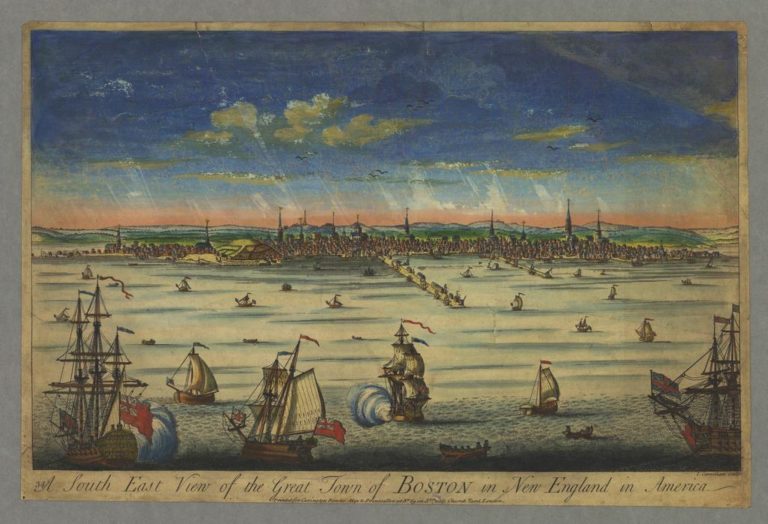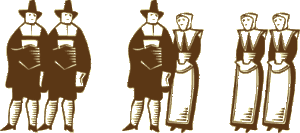Brother, Can You Buy a Salem Witch Death Warrant?: A story of forgery in the Great Depression
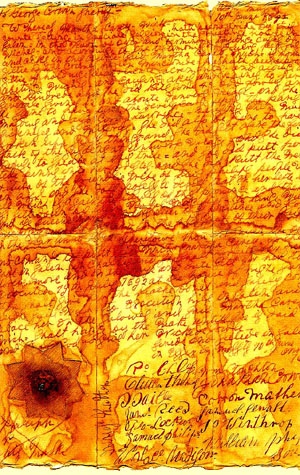
A. B. Macdonald, who should have known better, fell for the homesick veteran’s tale of woe. A self-described collector of Americana, Macdonald was a feature writer for the Kansas City Star, where Ernest Hemingway had learned to hard-boil his prose. On a stormy Sunday morning in October 1932, a man calling himself Captain E. Newman Bradley knocked on his door with an offer to sell a rare document at a bargain price. Bradley, Macdonald recalled, was “a tall, slim man, with sunken cheeks and an expression of sorrow and weariness in his face,” wearing a thin brown overcoat and holding a well-worn cap in his hand. “I have not washed, nor combed my hair, nor eaten for fifteen hours,” he said. “I have been too much troubled to do so. I have come to tell you the hardest hard-luck story you ever heard.” He told Macdonald that he was from Houston, a veteran of the World War, “formerly of the air service, U.S.A.” (where, he claimed, he had taught Lindbergh to fly), showed him his discharge papers (specially signed by “General Pershing” in recognition of his bravery as “a flying ace”), and opened his coat to give Macdonald “a glimpse of a shiny metal shield pinned to the breast of his flannel shirt.” He had been an antiques dealer, “ruined” by the Depression. The promise of a job in Kansas City was “a life-saver, for my wife was sick.” He loaded some rare books and documents into his jalopy, “to sell in case of emergency,” and drove north, but he arrived to find that the job had been given to someone else. “[D]ropping his voice to a monotone, filled with sadness,” he read Macdonald a telegram he had just received “that has broken my heart.” The telegram informed him that his wife was dead.
It would be an act of charity, as well as a shrewd investment, if Macdonald could find it in his heart to buy the death warrant of Elizabeth How, hanged as a witch at Salem in 1692, that Bradley had in his car. “Let me tell you how this excessively rare document came into my possession,” he explained. “Five years ago, in my prosperous days, I bought the furniture, books, pictures and other things in a very ancient mansion on a large plantation in Mississippi and shipped them to my store in Houston. Among the things was a very old Bible. One day, as I turned its leaves, I found this old document, folded between its pages where it had probably lain for a century or two.” The “yellowed old document, the ink faded, its edges gnawed by the tooth of time,” was accompanied by an official certificate of authenticity from the South Carolina Historical Society in Columbia, bearing a file number and the signature of curator J. A. Skaggs, who attested that the Massachusetts Historical Society and an expert firm in New York joined him in pronouncing it genuine. And Bradley wanted only twenty dollars for it. “That will take my car to Houston,” he said. “Do me this favor, please, and you may have whatever profit is in it for you.”
Macdonald immediately tried to parlay his good deed into a small fortune. He offered to sell the warrant to Charles Tuttle, a Rutland, Vermont, collector of “Americana,” “First Editions,” and “Vermontiana,” who enthusiastically responded that before the crash, such a rare document would have fetched $10,000, and even in these hard times ought to go for $5,000 ($65,000 today). Tuttle was not willing to buy it himself but tried to sell it, “at a small commission,” to Howard Corning, secretary of the Essex Institute in Salem. “The Document is faded and foxed a little,” Tuttle told Corning, and the “bottom edge . . . is worn off so that a name signed there is illegible,” but “[t]he balance is as plain as the day it was written.” He sent Corning a typewritten copy of the warrant and followed up ten days later with the “real” thing.
“The thing is a fake from beginning to end,” Corning replied. The modern ink alone was “enough to discredit it,” and the stains on the paper obviously came from a forger rather than age. He advised Tuttle to take a look at the facsimile of the only known Salem death warrant—for Bridget Bishop—in Charles Upham’s 1867 history of the witchcraft affair; “[Y]ou will see that [the] wording and the writing are entirely different.” Tuttle was embarrassed. “I confess at first glance it fooled me. Not so much from the looks of it, but from the fact I did not see how the guaranty got on there.” Of course the ink and the stains were suspect, but the South Carolina Historical Society’s authentication seemed authentic. They ought to look into this Macdonald character, though Tuttle’s hunch was that he was “an innocent party”; it seemed unlikely that a forger would be on Tuttle’s mailing list as a collector.
In their embarrassment, Tuttle and Macdonald reassured each other that the forgery had been “cleverly executed.” Corning tactfully agreed, but after Macdonald had confirmed his innocence and decided to write an article about the scam, Corning suggested that the warrant really was not very clever at all. Besides the “suspiciously modern” ink, paper, and handwriting, and the “clumsy” staining, he explained, “the internal evidence was also damning.” The forgery was “signed” by a panoply of Puritan celebrities, including Increase and Cotton Mather, John Winthrop, and Samuel Sewall. The Bishop death warrant was signed only by William Stoughton, the chief justice of the court of oyer and terminer at Salem. Governor William Phips never spelled his name with two p’s; he was “William Phipps” on the forgery. Corning neglected to point out to Macdonald the document’s most obviously faked signature: the “mark” of the Wampanoag leader “King Philip.” J. A. Skaggs noted the “famous mark” on his certification of authenticity. But Philip had been killed in 1676. Skaggs, it turned out, did not exist, and there was a state historical commission in Columbia, but the South Carolina Historical Society was in Charleston.
Macdonald was not alone in getting played for a sap by “Captain Bradley.” Bradley had taken several other Kansas City collectors for as much as $100 ($1300 today) before he “nicked” Macdonald, and he got the city’s Grolier Society for $50 just after. Corning first learned of the forgeries in August, when the editor of the local newspaper in Whitewater, Wisconsin, wrote the Essex Institute on behalf of his fellow villager S. Hoyum, a schoolteacher who had quite remarkably come into possession of a death warrant for the accused witch Sarah Good. As the Whitewater Register breathlessly reported it, “A few days ago a man from Tulsa, Okla., drove into Whitewater. He was a combination interior decorator and collector of antiques. More than that, he was broke. Hunting up a local resident who he figured might be interested he offered to pawn a valuable relic he carried for a loan sufficient to get him home. He said he would repay the loan because he wanted the relic and insisted on an agreement to that effect in writing.” The editor requested a letter from the Essex Institute certifying the document’s authenticity. Since Hoyum was holding the document as security for a loan, he was not yet prepared to offer it for sale—”although the period of the loan has expired and the manuscript is obviously his.” The poor traveler must have been so badly off that he could not come up with the cash to reclaim his beloved relic. He had told Hoyum that he needed the loan to get home to his sick wife. Maybe she had taken a turn for the worse, and the money for repayment had gone instead to her doctors in Tulsa. Meanwhile, the Register boasted, “Whitewater houses an antique which historical museums throughout the country would covet.”
Quincy, Illinois, was equally proud of its new antique: the death warrant of Rebekah Nurse, who, according to the Quincy Herald-Whig, “was sentenced to hang by Phillip, king of the Indians,” on June 10, 1692. (A curious elision of “villains” here, as if Philip, even if he had still been alive, could have shared legal authority with Puritan judges.) The “rare” document, “valuable, both from a monetary and historic standpoint,” was now in the proud possession of Mrs. Don Hoover. Mrs. Hoover had generously allowed it to be put on display in the window of Odell’s department store.
The “original” Nurse death warrant was simultaneously in the possession of W. A. Thompson, an antiques collector in Greensboro, North Carolina, who offered to sell it to the Smithsonian in September, and of Mrs. J. E. Eckdall of Emporia, Kansas. Mrs. Eckdall, reported her nephew Joseph Kellogg, “is a member of patriotic societies and is interested in such things.” Kellogg, a professor of architecture at the University of Kansas, was highly dubious about his aunt’s document. “What on earth could King Philip have to do with Salem witchcraft matters, twenty years or so after his death!” he asked Corning in February 1933. Corning still took no notice of the strange Philip business when he replied to Kellogg to confirm that Bradley had sold his patriotic aunt a “rank forgery.” Corning also fielded inquiries from Sandwich, Illinois, (about a Martha Corey death warrant), and Marshall, Texas.
By November 1932, Corning had seen enough of the forgeries to launch a public effort to warn collectors. “Beware of a faker who is traversing the Southern and Western states endeavoring to sell some skillfully forged death warrants for female witches of Salem, Mass., 1692,” advised the Boston Evening Transcript’s antiques column. “The warrants are cleverly and convincingly authenticated.” Publisher’s Weekly’s warnings were not so delicate in sparing the feelings of those who were swindled; the forgeries were “obvious.” In January 1933, PW carried an item reporting that a “person calling himself ‘Bradley’” had been “canvassing the middle western libraries” with his fakes: “This person usually represents himself as ill and stranded and attempting to get home to Texas.” The South Carolina Historical Society issued its own warning through the Charleston News and Courier.
Why did Bradley choose to forge Salem death warrants? Why not, say, letters from obscure signers of the Declaration of Independence? (A November 1932 article in the American Book Collector on “fakes, forgeries, and frauds” mentioned fishy Button Gwinnett documents as the kind of thing collectors might encounter.) Corning speculated that it had to do with geography. “Apparently the man has been working almost entirely in the Middle West and South,” he reasoned to Macdonald. “I suppose on the principle that the people out there are not likely to be quite so familiar with this type of document as we would be here in the East.” But if midwesterners and southerners were unfamiliar with the documents of Puritan New England, they were all too familiar with the contemporary discourse of Puritanism. Eastern critics and intellectuals—H. L. Mencken most conspicuously and nastily—had lambasted the Midwest and South throughout the 1920s for their superstitiousness, repressiveness, narrow-mindedness, and general benightedness. Mencken railed against “the Puritan’s utter lack of aesthetic sense, his distrust of all romantic emotion, his unmatchable intolerance of opposition, his unbreakable belief in his own bleak and narrow views, his savage cruelty of attack, his lust for relentless and barbarous persecution”—all of which were revealed in the Scopes Trial in Dayton, Tennessee, in 1925. With beautifully controlled irony, Esther Forbes’s 1928 historical novel A Mirror for Witches located Salem’s “lust” for persecuting the bewitching heroine Doll Bilby in sexual repression.
When Bradley, in the guise of the South Carolina curator J. A. Skaggs, “authenticated” his forged death warrants by observing, “This is the only shameful delusion in early Americana [sic] history,” was he suggesting to his midwestern and southern collectors that Puritanism was not that bad after all? (“The only shameful delusion,” “only 22 executions in Mass.,” he wrote.) Reminding them that the site of a truly relentless and barbarous persecution was Massachusetts? Exploiting their desire to deflect the charge of benightedness back in time and toward the East and North?
Or maybe Bradley had in mind a much more recent instance of persecution and scapegoating by rigid authorities. He gave his victims a false name, but his age and appearance made it likely that he really was a veteran of the World War. Whether or not he had a sick wife or wanted to get home to Oklahoma or Texas, his hard luck was probably genuine. He certainly would have heard and read about the World War vets who hitched, rode the rails, or walked to Washington in the late spring and summer of 1932 to demand early payment of their bonuses to relieve some of the burdens of unemployment. The Bonus Expeditionary Force (BEF)—Bonus Army, as it came to be known—started out as about 250 men from Portland, Oregon, in May, and swelled to 25,000 from across the country in June and July. Camped for a time in twenty-three spots in Washington, and later gathered in one main camp on Anacostia Flats, the BEF included a Texas unit of about thirteen hundred, “headed by a woman—‘a Joan of Arc in overalls,’ the press called her, and with picturesque livestock—a burro named Patman (after the Texas congressman who sponsored early payment) and a goat named Hoover.” On July 28, recalled the BEF’s leader, “a military column moved down Pennsylvania Avenue,” under the command of General Douglas MacArthur. “Here were tanks and cavalry, the men wearing gas masks and carrying drawn sabers. In open trucks machine guns were stripped for action.” After clearing the remaining BEF billets in the city proper, they crossed the bridge to Anacostia, set fire to the tents and shacks in the encampment there, and drove the veterans and their families out of the capital. The routed Bonus marchers, vilified now by the Hoover administration as “communists and persons with criminal records,” straggled through Maryland, reassembled briefly in Johnstown, Pennsylvania, and then dispersed back to the roads and box cars. Maybe Bradley was even among them. Maybe he had passed the long periods of boredom on Anacostia Flats, the chances of getting his bonus increasingly remote, scrawling and staining Salem death warrants. From the torched bivouac at Anacostia, he could have made his way to the upper Midwest in time to start peddling his wares by the middle of August.
Or maybe Bradley was a con man, pure and simple, who shrewdly exploited a burgeoning desire for authentic Americana. Surveying popular attitudes toward the nation’s past, the historian Michael Kammen lists several impulses behind Americana collecting in this period: patriotism; antimodernism; the excitements of bargain hunting; the collegiality of a shared hobby; the internalization of a craft-based “American aesthetic.” It is hard to imagine death warrants tapping directly into love of country or nostalgia, and Bradley’s work did not share much with “the solid, simple, dignified and lovingly wrought craftsmanship” of early American tools, textiles, pottery, or furniture. But for a moment in the worst year of the Depression, A. B. Macdonald, S. Hoyum, Mrs. Don Hoover, W. A. Thompson, Mrs. J. E. Eckdall, and Bradley’s other marks experienced the thrill of possessing something unique (“very rare,” said Skaggs’s certificate), “real” (“pronounced genuine by Mass. Historical Society”), and “valuable.” Bradley’s cleverness was to recognize that the more “honestly” he performed his desperation, the more certain his marks would be that his bargain price signified real worth.
Further Reading:
A. B. Macdonald told the story of how he was bilked by Bradley in “Texas Collector is Forced to Part with a Rare Document,” Kansas City Star, February 19, 1933, 3C. Correspondence and clippings related to the forgeries can be found in Witchcraft Documents, Family Mss., Box 2, Folder 1, Phillips Library, Peabody Essex Museum, Salem, Massachusetts. I am indebted to Bryan F. LeBeau’s article on the Carey document, a forged Salem death warrant from Nebraska that its owners tried to sell in the 1980s, for pointing me to many of my sources. See Bryan F. LeBeau, “The Carey Document: On the Trail of a Salem Death Warrant,” Early America Review (Summer 1997). The Mencken quotation, which originally appeared in “Puritanism as a Literary Force” (1917), is from Fred Hobson, Mencken: A Life (New York, 1994), 192. For the Bonus March discussion, I drew on Roger Daniels, The Bonus March: An Episode of the Great Depression (Westport, Conn., 1971), 82, 84; and W. W. Waters as told to William C. White, B.E.F.: The Complete Story of the Bonus Army (New York, 1933), 222-23, 257. Michael Kammen’s discussion of Americana collecting is in Mystic Chords of Memory: The Transformation of Tradition in American Culture (New York, 1991), 322-25.
This article originally appeared in issue 5.3 (April, 2005).
Steven Biel is director of the history and literature program at Harvard University and the author of American Gothic: A Life of America’s Most Famous Painting, which will be published by W.W. Norton in June.
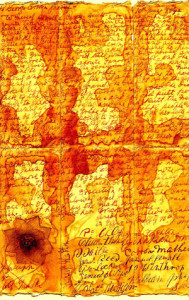
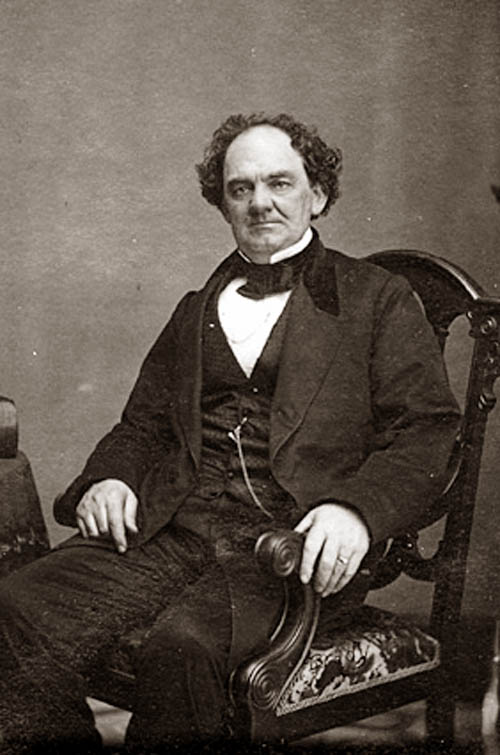

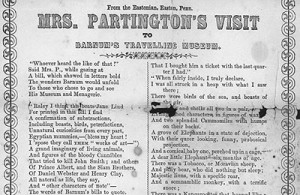
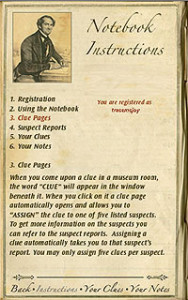

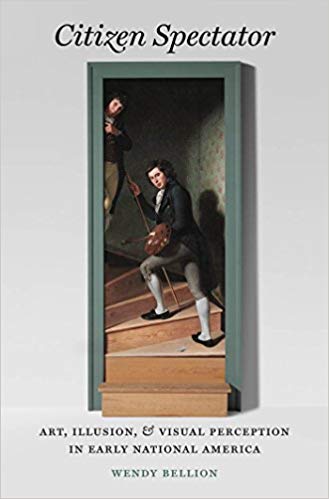
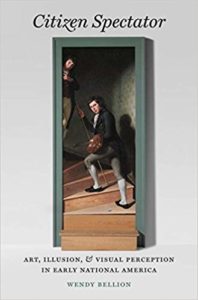
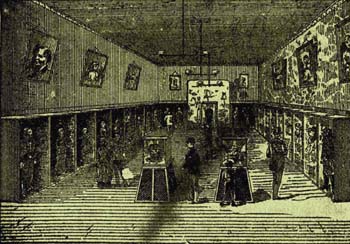
![Fig. 1. Pacific Museum of Anatomy and Natural History. Frontispiece, L. J. Jordan [Kahn], The Philosophy of Marriage (San Francisco, 1865). Courtesy of the National Library of Medicine.](http://commonplacenew.wpengine.com/wp-content/uploads/2015/10/4.2.Sappol.1-300x183.jpg)







